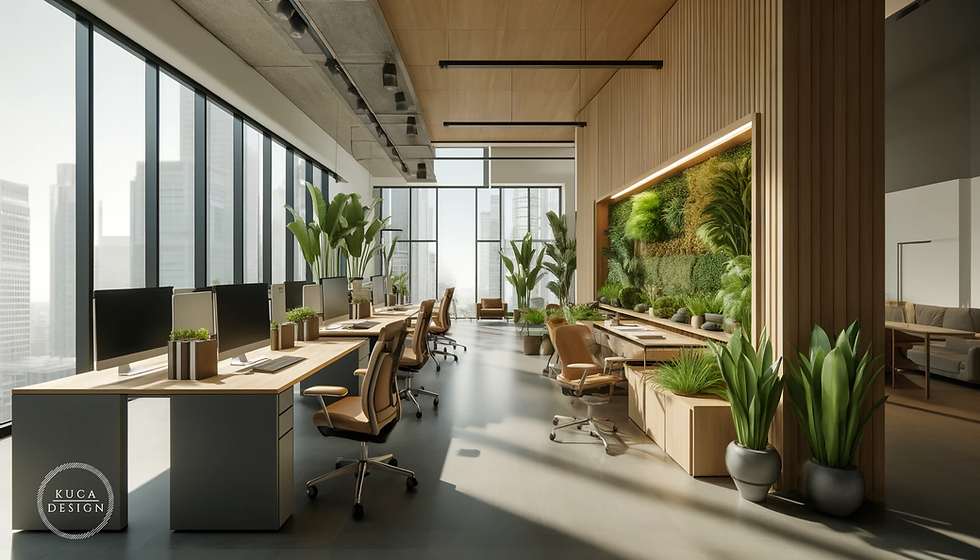Biophilic Design: Benefits and Implementation Methods of Bringing Nature Indoors
- Kuca Design
- 30 May 2024
- 2 dakikada okunur
In the world of interior design, biophilic design is becoming increasingly popular. The idea of integrating nature into indoor spaces offers numerous benefits, not only aesthetically but also in terms of health and well-being. In this article, we will explore the benefits of biophilic design and how it can be implemented in interior spaces.
What is Biophilic Design?
Biophilic design is the art of incorporating nature and natural elements into indoor spaces. This design approach aims to strengthen our connection with nature, reducing stress, enhancing creativity, and improving overall quality of life. Natural light, plants, water features, and natural materials are the core components of biophilic design.
Benefits of Biophilic Design
1. Stress Reduction and Mental Health
Incorporating natural elements into indoor spaces reduces stress levels and improves mental health. The presence of plants, natural light, and water sounds creates a calming effect and promotes relaxation.
2. Increased Productivity and Creativity
Biophilic design enhances productivity and creativity in workplaces. The presence of natural elements makes employees feel more motivated and energetic.
3. Better Air Quality
Indoor plants improve air quality by absorbing toxins from the air. This creates a healthier living and working environment.
4. Aesthetic and Visual Appeal
Natural elements add aesthetic value to indoor spaces. Natural materials, plants, and water features make spaces look more attractive and inviting.
Implementation Methods of Biophilic Design
1. Plants and Green Walls
Indoor plants and green walls are among the most common applications of biophilic design. Different plant species and green wall systems add natural beauty to spaces while also improving air quality.
2. Use of Natural Light
Maximizing the entry of natural light into indoor spaces is an important part of biophilic design. Large windows, glass doors, and open-plan designs facilitate the spread of natural light.
3. Water Features
Water features create a calming effect in biophilic design. Indoor fountains, aquariums, or water walls add a soothing atmosphere to spaces.
4. Natural Materials
The use of natural materials such as wood, stone, and bamboo strengthens biophilic design. These materials add warmth and naturalness to spaces.
5. Organic Forms and Patterns
Organic forms and nature-inspired patterns are another key element of biophilic design. Natural patterns used in furniture and decoration add harmony and aesthetic appeal to spaces.
Conclusion
Biophilic design is a wonderful way to bring nature into indoor spaces and enhance the quality of life. The integration of natural elements offers many benefits, such as stress reduction, increased productivity, and aesthetic appeal. By applying biophilic design principles in interior design projects, you can create healthier and more inviting spaces.
For more information and implementation suggestions on biophilic design, continue following our blog. Discover ways to bring nature into your interiors and improve your quality of life!


Yorumlar